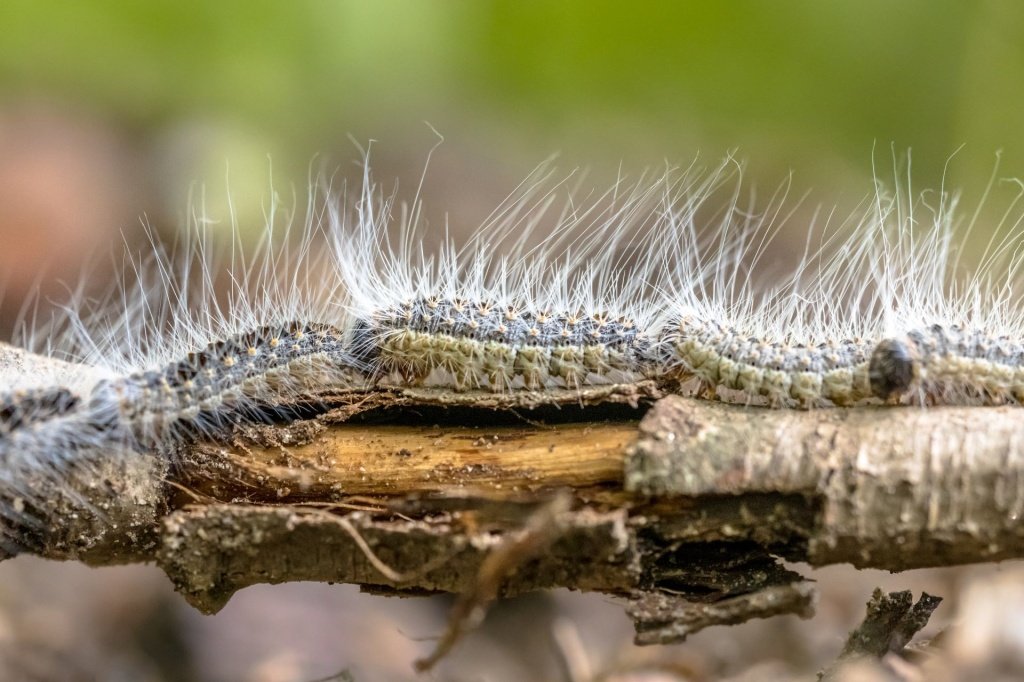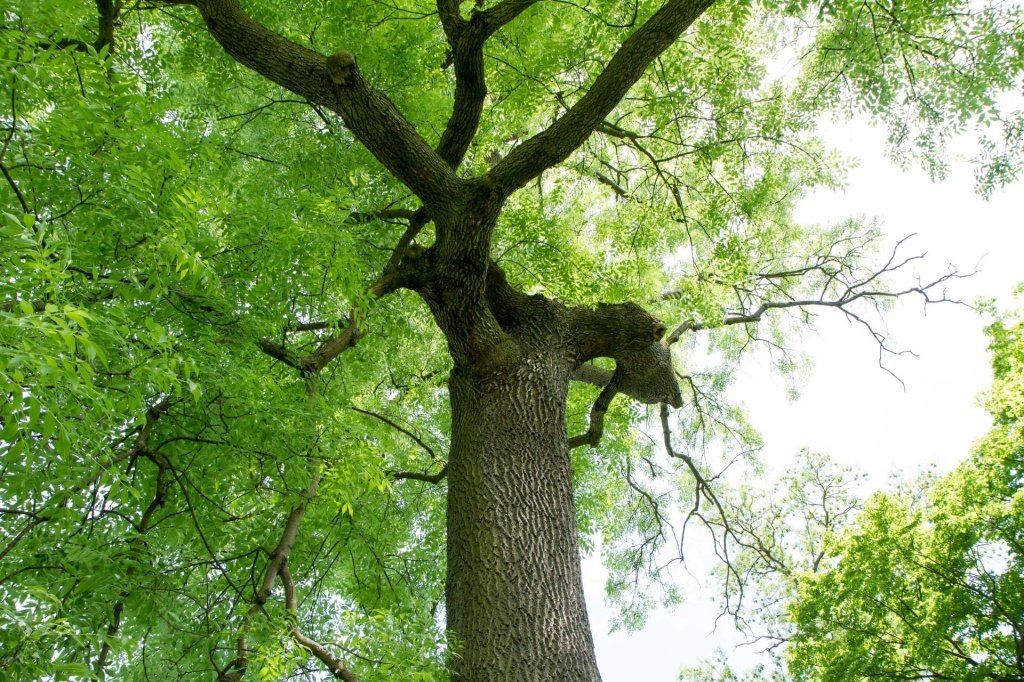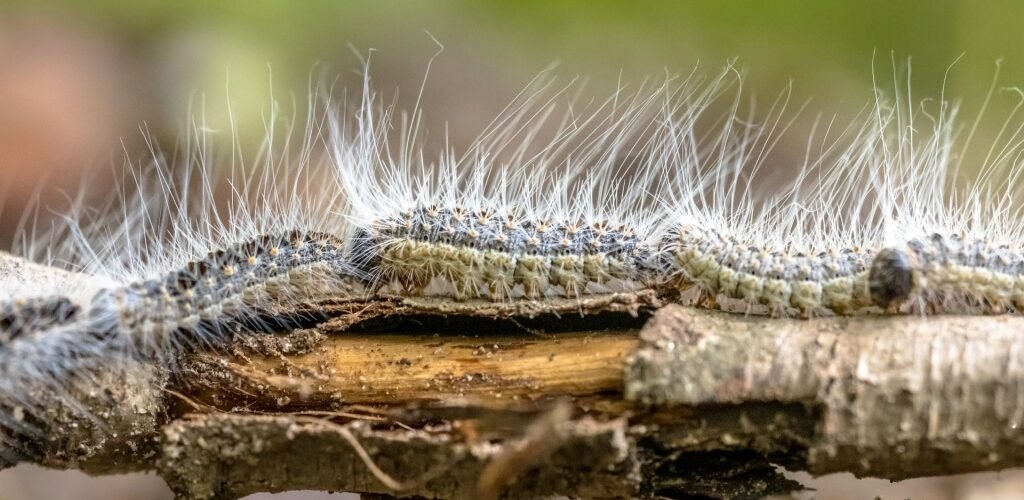Today is the United Nations International Day of Forests, and in this blog post we explore the importance of this work.
The Climate and Plant Biosecurity Climate Service, funded by the Department for Environment, Food and Rural Affairs (Defra), is a collaboration between the Met Office’s Vegetation-Climate Interactions team, Defra’s Plant Health Risk and Horizon Scanning team, the University of Exeter, Fera Science, the University of Warwick, Forest Research and The Royal Botanic Gardens, Kew.

Since 2006 the non-native and invasive Oak Processionary Moth has been spreading across England and Wales. Picture: Adobe Stock
The aim of the service is to provide analyses, tools and guidance to help manage the climate-related risks to UK plants, particularly trees and forests, from plant pests and pathogens.
Pest and pathogen outbreaks
Pests and pathogens present serious risks to our trees and forest habitats as well as the ecosystem services they provide. The number of new pest and pathogen outbreaks affecting trees has increased rapidly in recent years (see table, Source: Forestry Commission).
Year (since 1971) New tree pest or pathogen outbreak
- 1971 Dutch elm disease
- 1983 Great spruce bark beetle
- 1984 Phytophthora alni
- 1995 Gypsy moth
- 1997 Dothistroma needle blight
- 2002 Phytophthora ramorum
- 2002 Horse chestnut leaf miner
- 2003 Phytophthora kernoviae
- 2005 Bleeding canker of horse chestnut
- 2006 Oak processionary moth
- 2006 Phytophthora pseudosyringae
- 2007 Pine tree lappet moth
- 2010 Acute oak decline
- 2010 Phytophthora lateralis
- 2012 Ash dieback
- 2012 Asian longhorn beetle
- 2012 Sweet chestnut blight
- 2012 Phytophthora austrocedri
- 2014 Phytophthora sikiyouensis
- 2014 Sirococcus tsugae
- 2015 Oriental chestnut gall wasp
- 2017 Elm zigzag sawfly
- 2018 Eight toothed spruce bark beetle
- 2021 Phytophthora pluvialis
Climate (variability and change) influences pests and pathogens in many ways, including i) the timing of life cycle events (such as emergence from egg to caterpillar), ii) the spatial distribution and spread, and iii) the introduction and establishment of non-native species.
Tools to help manage UK plant biosecurity
The UK Climate-Pest Risk Web Tool is one of the tools that has been developed by Met Office scientists Neil Kaye and Deborah Hemming (Vegetation-Climate Interactions team) in collaboration with biosecurity and forestry experts at Defra, Forest Research, Fera Science and the University of Warwick. It integrates ecological knowledge and models of known temperature thresholds for different pests/pathogens, with up-to-date climate observation datasets from the Met Office National Climate Information Centre.
Deborah Hemming, Scientific Manager of the Vegetation-Climate Interactions team at the Met Office, who leads this climate service, notes: “When tree pests and diseases become established, they can wreak havoc on our woodlands. Commercial forestry can be affected hugely, but they also affect the landscapes of our islands which many people love and cherish. In the 1970s, Dutch Elm Disease killed most of the UK’s stately elm trees with those plants remaining being small stands in isolated sections of hedgerow. Similarly, Ash Dieback since 2012 has decimated ash trees with similar devastating effect.
“When trees die, especially native broadleaf trees, there are impacts on landscape and wildlife. And in times of climate change there is also a reduction in the availability of carbon stocks because trees provide a hugely valuable ecosystem service by drawing down atmospheric carbon and locking it away. By joining forces with experts in plant biosecurity at Defra, ecological modelling at University of Exeter, forestry at Forest Research and ecological systems at Royal Botanic Gardens, Kew, we are able to provide scientifically robust and useful research, tools and services to help protect UK trees and forests now and into the future.”
The tool enables users to easily estimate the timings and locations of pest outbreaks across the UK, and inform actions to assess, survey, monitor and eradicate plant pests, helping to enhance UK plant biosecurity.
Simon Toomer, Curator of Living Collections at Royal Botanic Gardens, Kew, says: “As we develop strategies and plans to adapt and prepare our tree and shrub collections for changing climatic conditions, one of the most complex and least understood threats is that from pests and diseases. This research is going to help us understand how changes in general climate variables translate into changes in the specific conditions experienced by pest species, and how we may adapt our management accordingly.”

Healthy ash trees form an important part of the UK’s tree canopy. Isolated trees are also a feature of hedgerows. Picture: Adobe Stock
Improving monitoring and modelling of microclimates
Pests and pathogens respond to microclimates within the habitats where they live. To improve the estimates of pest/pathogen risks, ecological modellers at the University of Exeter have developed mechanistic microclimate models to estimate temperature and humidity within relevant habitat locations e.g., under tree canopies, inside tree trunks or buried at various depths within the soil. In these habitats, microclimates can vary by 40-50°C and be significantly different to conditions observed at weather stations.
Ilya Maclean, Professor of Global Change Biology at the University of Exeter, says: “It is important to understand the climate as pests and pathogens experience it. This can be very different from the conditions measured by a weather station. My team is developing models that allow us to do this and the data we are collecting as part of this project will be invaluable in helping us improve our models”.
Daegan Inward, Senior Scientist at Forest Research, explains further: “We know that beetle outbreaks are often associated with sun-warmed stems, and understanding the under-bark microclimate is important to help predict the risk of insect establishment and population growth in Britain.”
Climate change and globalisation
To validate the microclimate models, in February 2024 the Met Office, the University of Exeter, Forest Research and Kew Gardens began a campaign of microclimate monitoring at five sites in different forest habitats across southern England (Cornwall, Dartmoor, Alice Holt, Kew Gardens and Wakehurst). The team installed a series of sensors to monitor temperature within the woodlands and inside tree trunks. The data collected will help improve the understanding and modelling of variations in the pest/pathogen microclimates, and therefore the estimates of biosecurity risks.
Defra Chief Plant Health Officer Nicola Spence said: “Climate change and globalisation are increasing the number and diversity of pests and pathogens we are exposed to, resulting in an ever-growing number of threats. This collaborative effort to develop climate modelling tools and improve our understanding of pest or pathogen climate interactions, will allow us to better plan for and improve our ongoing surveillance and monitoring. This work is crucial to adapt to a changing climate and better understand how the health and resilience of our trees could be at risk.”
Source: metoffice.gov.uk









 Please wait...
Please wait...
Add comment